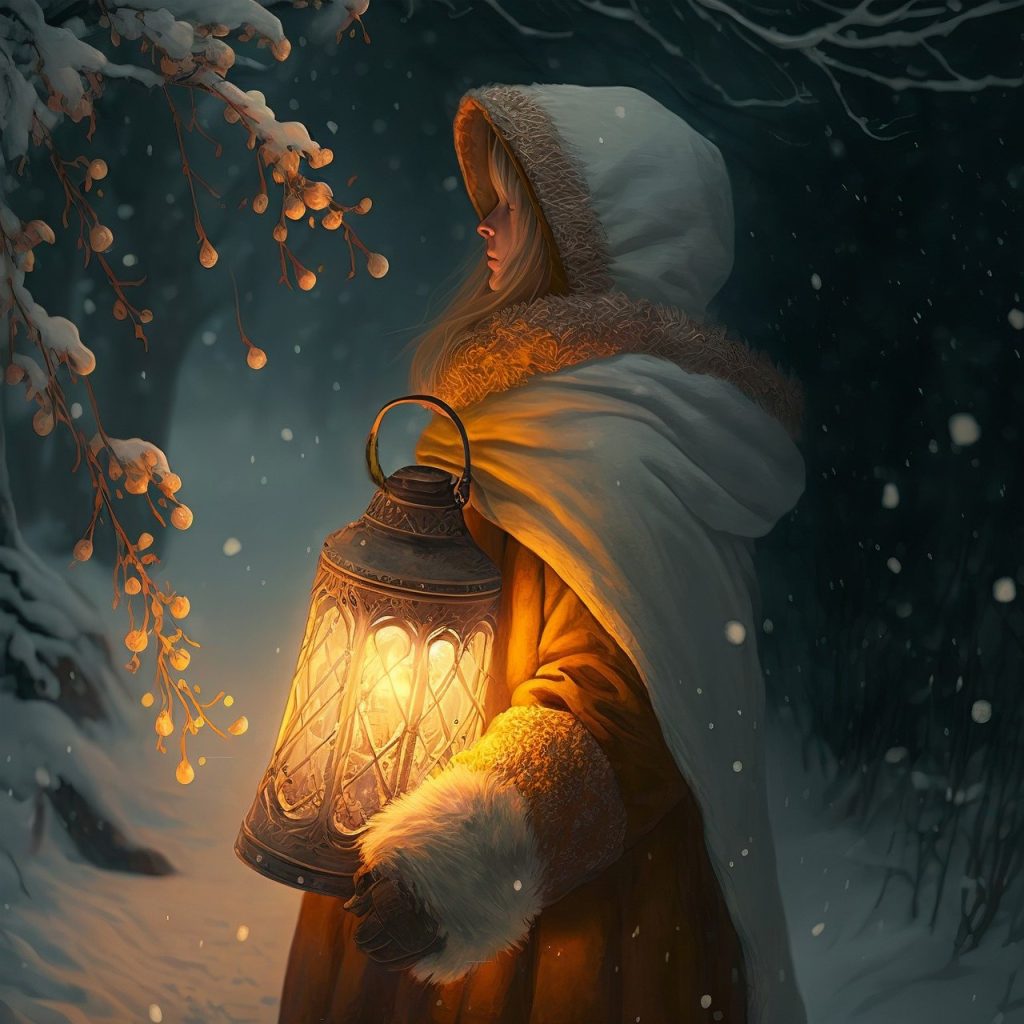
Modern humans in the Christian-dominated Western world have loaded all of their spiritual celebration energy into the months between Thanksgiving and Christmas This can make December in particular both a time of great joy and great stress and even sadness. Most Pagans, through the Wheel of the Year, spread out our seasonal celebration energy evenly through the year. But even for us, this “calendar spiritual loading” can intensify the energy around the Winter Solstice.
The Earth’s cycles at the Winter Solstice
Because of the way that the Earth retains heat, the Winter Solstice only marks the beginning of the coldest days of the year. In the Northern Hemisphere, temperatures typically reaching their coldest point at the end of January or the beginning of February.
It is this time when the most direct sunlight reaches its southernmost point at the Tropic of Capricorn. It marks the shortest day of the year in the Northern Hemisphere. But it is at this point that the Sun will start returning northward. From here on in, the days grow longer. Even as the days grow colder, the lengthening days bring us promise of warmer days to come.
In the Southern Hemisphere, this is the longest day of the year rather than the longest night. Many Pagans in the Southern Hemisphere flip the seasonal celebrations to match the seasonal cycles in the land around them. As such, many are celebrating the Summer Solstice at this time.
So just as Christians around this time celebrate what they regard as the birth of the Son S-O-N, Pagans celebrate the return of the Sun, S-U-N. It is a reminder of warmer times to come.
Celebrating Yule
Yule is perhaps the most well-know Pagan Winter Solstice celebration. It is originally a Germanic holiday. The Nordic tradition of Yule was historically a celebration of the god Odin. Folklore tells stories of him riding across the night around the time of the Solstice and visit people in their homes. Although rather than ride a sleigh with eight tiny reindeer, Odin would ride an eight-legged horse. It was a time of great feasting, sometimes lasting as long as twelve days. They might brew mead, which was usually reserved for special occasions. Some would make animal sacrifices to the gods and to the ancestor spirits. The Yule log was a large piece of oak with runes carved into them asking for the protection of the gods. Yule also had its wreaths, but these would be large wheels which would lit on fire and then rolled down the hill, as a means of asking the gods for the return of the sun.
Even though the Norse god Odin didn’t ride a sleigh guided by reindeer, reindeer figure prominently in other Solstice legends in Mongolia, Siberia, the Arctic Circle and far northern parts of Europe. In Mongolia, there are ancient stones depicting deer in flight. In some Baltic mythical traditions, the sun goddess Saulé would ensure the return of light and fertility by flying at night and dropping pebbles of amber—symbolizing the sun–down people’s chimneys, on the night of the winter solstice. The feast day of the Eastern European mother goddess Rohanitsa is around the Winter Solstice. She is depicted as having antlers. Another legend has a deer goddess carrying the dying Sun in her antlers and carrying it from the old year to the new so that it can be reborn anew and grow once again.
Decorating trees
The decorating of trees long precedes Christmas and wasn’t just confined to the Winter Solstice, nor Europe. The Celts, in particular, have a rich tree-decorating history. But the act of bringing in a tree indoors and decorating it only dates to the 16th century in Germany. So it’s not 100% accurate to say that the modern Christmas Tree was stolen from the Pagans by the Christians.
The theme that unites these myths and practices is one encouraging and celebrating the return of the sun. It is a reminder that the darkest times of the year and the darkest times in our lives are temporary. The Winter Solstice is a reminder of the promise of lighter times ahead.
Amidst the busy and hectic nature of the Christmas season, take the time to slow down and enjoy the Winter Solstice. Enjoy the silent night of the longest night of the year in the Northern Hemisphere.
